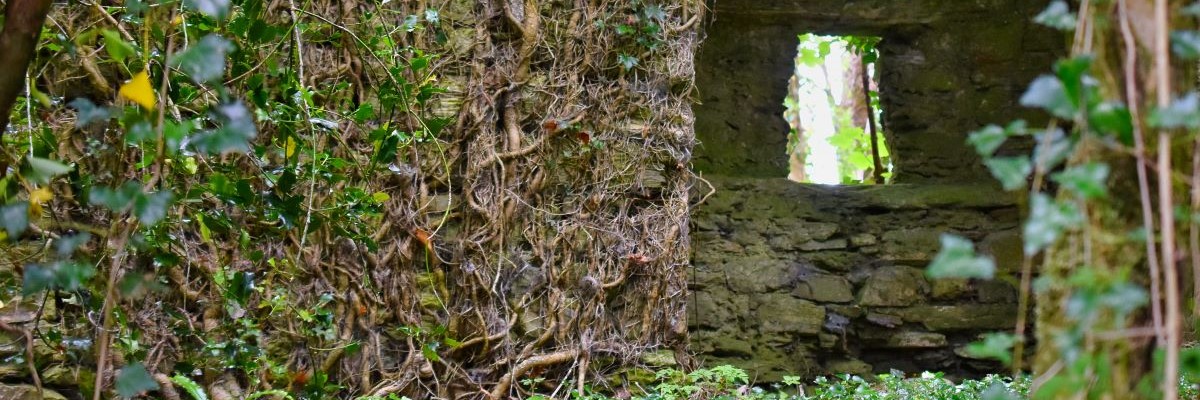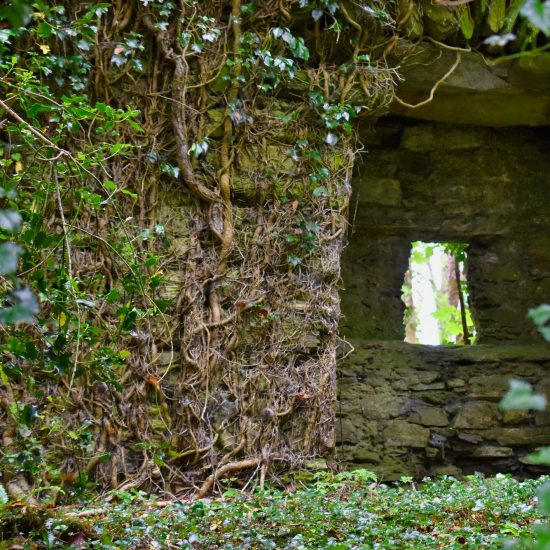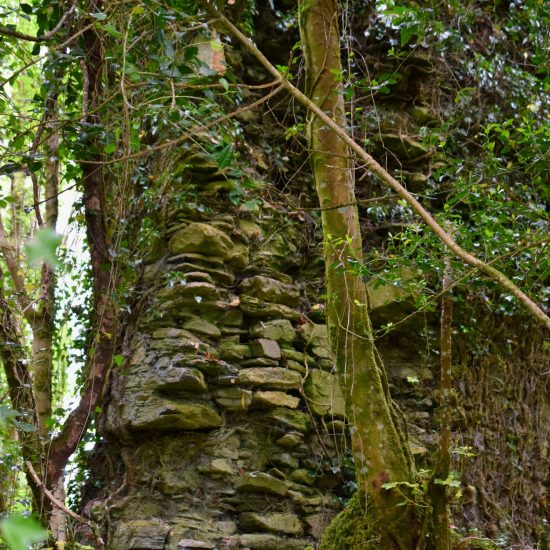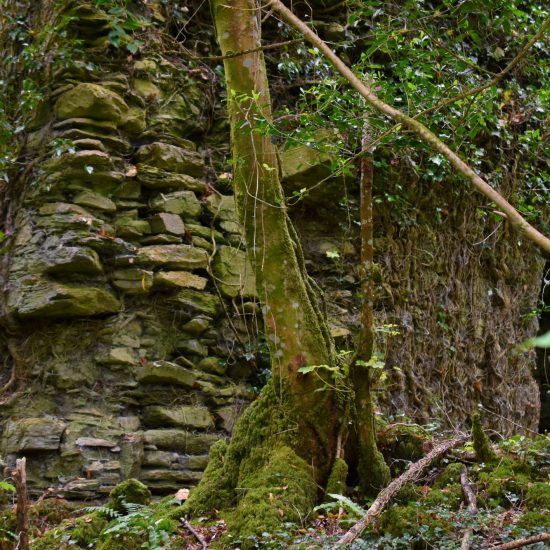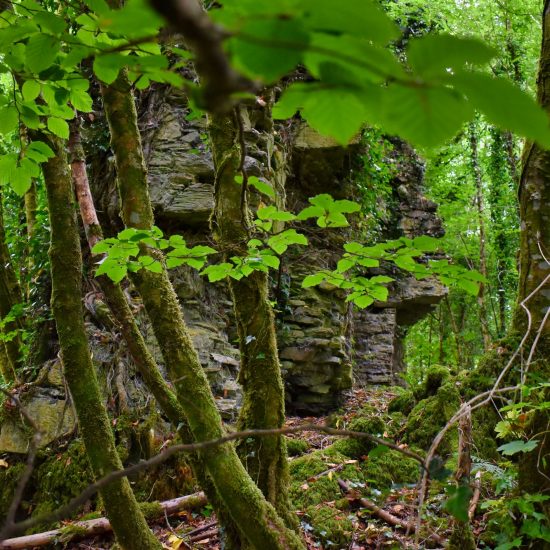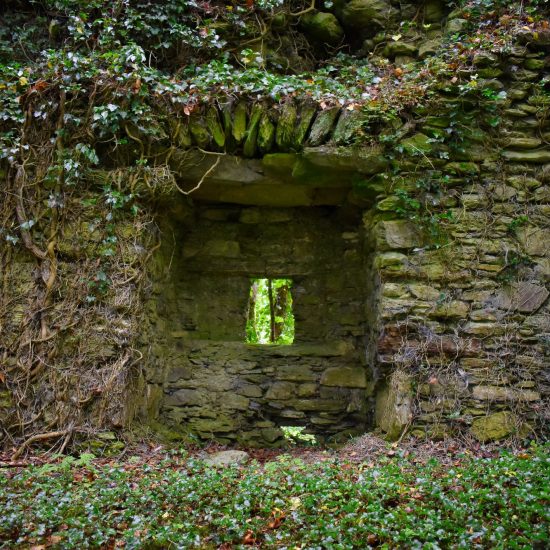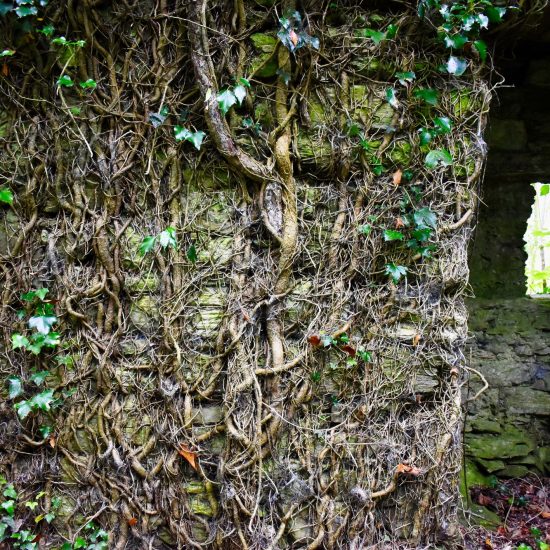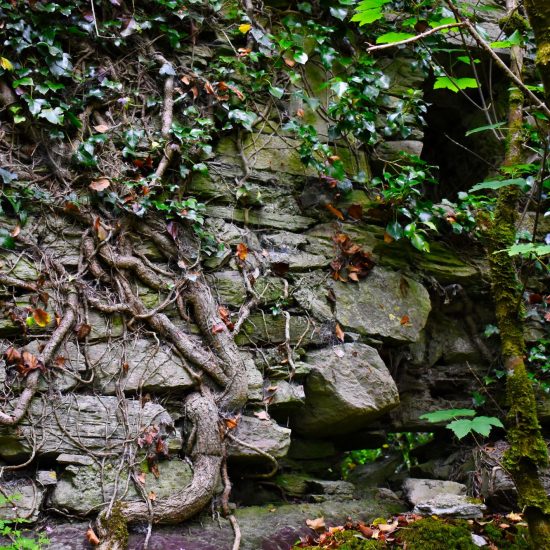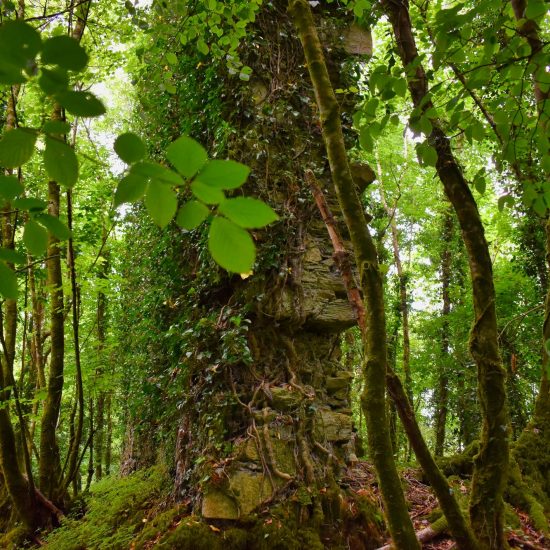Cappanacuss Castle
We have all heard the story of Bonnie Prince Charlie, and we know the many songs associated with him: the Skye Boat song, My Bonnie lies over the Ocean, My Ghile Mear, etc.
What is not generally known is that his companion during the campaign in Scotland 1745-46 was John O’Sullivan of Cappanacuss Castle near Kenmare.
O’Sullivan’s ancestors were the O’Sullivan Mor, Lords of Dunkerron, but by the laws of Tanistry the title passed out of their family and they had to move from Dunkerron Castle to Cappanacuss, which was the official residence of the Tanist to the O’Sullivan Mor. During the Cromwellian Confiscation’s, John O’Sullivan’s grandfather, Owen, forfeited his lands, which were given to Sir William Petty.
John O’Sullivan was born in Cappanacuss in 1700. “His parents,” says a contemporary memoir printed in London 1743, “being very desirous of his making a figure in the world, they spared no expense their small estate would admit to make him a complete gentleman. Accordingly, being Roman Catholics, they sent this, their only son, at the age of nine years, to Paris, the best place in the world for the education of youth.
At fifteen years of age young O’Sullivan went to Rome where he began to study for the priesthood. Some time later he returned to Ireland to sell what was left of his estate as his parents had died. He returned to France and became secretary to the French Marshal Maillebois and tutor to the Marshal’s son.
With Maillebois, O’Sullivan saw active service in Corsica in 1739 and he soon gained a reputation as an expert in guerrilla warfare. He acquired such fame among the French Generals that one of them wrote:
“Mr. O’Sullivan understood the irregular art of war better than any man in Europe, nor was his knowledge of the regular much inferior to that of the best General then living.” O’Sullivan also saw action in Italy and Germany.
In 1744, he joined the household of Bonnie Prince Charlie to whom he was Adjutant General. Charles’s father, the Old Pretender, wrote to his son from Rome: “I am glad to find O’Sullivan is now with you, you will find it both of ease and advantage to you, because you can depend upon him.”
In 1745 Charles was living in Picardy and getting ready an expedition to sail to Scotland to regain the Crown for his father. He had surrounded himself with Irish Officers some of whom were veterans who had fought with his grandfather James II at the Battle of the Boyne 1690. Since 1633, Paris and Rome were centres of intrigue against the throne of England from which James II had been removed. The latter’s son lived in Rome and was known to his followers as James III of England and VIII of Scotland. Many exiled Irish rallied to the cause of James III and his sons, Charles and Henry (who became a Cardinal).
On 16th of July 1745 Charles set out for Scotland with two ships, the ‘Du Teillay’ supplied by an Irishman, Anthony Walshe, and the ‘Elizabeth’ a 67 gun frigate provided by another Irishman, Walter Rutledge of Dunkirk. The ‘Elizabeth’ carried 70C men, 1,500 muskets, 1,300 mounted broadswords, etc. On board the ‘Du Teillay’ with Charles were: William Murray, 2nd Duke of Atholl in Scotland; Colonel Francis Strickland, an Englishman; Aeneas Mac Donald, the Expedition’s banker, and four Irishmen: Sir Thomas Sheridan, a veteran of the Boyne and one time tutor to Prince Charles, and then over 70 years old; George Kelly; Sir John Mac-Donald; Colonel John O’Sullivan of Cappanacuss.
After a few days at sea, the ‘Elizabeth’ had to return to Brest having been attacked and badly damaged by H.M.S. ‘Lion’ and her Captain killed. So Charles was without men, arms and ammunition.
The ‘Du Teillay’ landed 24th of July on the West Coast of Scotland at Loch na nUamh, where the Clansmen gave Charles no great welcome and all but O’Sullivan and Anthony Walshe urged him to return to France. Soon, however, the MacDonalds, Stewarts, MacLeods, Camerons and many other Clans rallied to him, and the British Government placed a price of £30,000 on his head. O’Sullivan was the second most wanted man in Scotland. Charles retaliated by putting a price of £30 on the head of King George II but his advisers urged him to raise the sum to equal what was offered for his own capture. By September, Charles was on the road to Edinburgh, with 5,000 foot soldiers and 500 horse under two Lieutenant Generals: Lord George Murray and the Duke of Perth. John O’Sullivan was appointed Quartermaster General to the army.
O’Sullivan and Donald Cameron of Lochiel with eight or nine hundred Highlanders captured Edinburgh and Charles was declared Regent and his father declared King James III of England and VIII of Scotland. Of O’Sullivan, a contemporary English view states “to the abilities of this man we may justly attribute the success with which a handful of Banditti have so long been able to overcome and plunder a large part uf this opulent and powerful nation.”
Not content with taking Scotland, Charles and his “Banditti” swept down into England as far as Derby. The aforementioned memoir of 1748 says: “to the abilities of this gentleman (O’Sullivan) we are chiefly to attribute the success with which the inexperienced Charles with a handful of raw Highlanders so long maintained a sharp, and for some time, a doubtful, dispute (conflict) with the whole force of his Britannic Majesty, by which he so surprisingly over ran and as far as he pleased plundered not only the major part of the Kingdom of Scotland but also a great part of England itself.”
Word reached Charles’s army in Derby that two huge armies were massing against him, 6,000 men led by Wade and 3,250 infantry and 2,200 horse led by William Duke of Cumberland, son of George II, Butcher Cumberland as he was to become known. Lord George Murray advised Charles to retreat to Scotland and the Prince expressed his disappointment in ‘very abusive language.’ The Highlanders were equally sorry at having to leave when they were only 129 miles from London. The English army caught up to them at Falkirk and Charles’s soldiers scored a victory.
One of the casualties on the English side was Sir Francis Ligonier who commanded the dragoon regiments. It may be of interest to note that the slave ship that brought Kunta Kinte of ‘Roots’ fame from Gambia to Annapolis in July 1767 was the ‘Lord Ligonier’.
By now the Duke of Cumberland’s army was advancing from Aberdeen and Charles camped at Nairne near Culloden Moor. The choice of the Moor as a battlefield was O’Sullivan’s and Lord George Murray strongly objected as it would be too open a place for his Highlanders. There was plenty of hilly marshy land nearby where Cumberland’s cannon would have bogged down. But Prince Charles stood by the choice of ‘Sylvan’ as he called his friend.
It turned out to be an unfortunate choice. The Clansmen were decimated by the cannon and the English dragoons with musket and bayonet proceeded on a bloody massacre. All wounded men were bayoneted or clubbed to death after the battle. Any survivors who took to the hills were followed by Cumberland’s soldiers and cut down. Charles and a few friends, including O’Sullivan, escaped and for five months they found refuge in isolated places. In spite of the hardships facing the Clans Charles was not betrayed, even though he still had a price on his head. It was at this time that Charles met Flora Mac-Donald who took him to her home in Skye, disguised as her Irish maid Betty Burke.
His flight was not without its lighter moments. One morning when Flora “was addressing of him, he was like to fall over with laughing . . . as if he had been putting on women’s clothes merely for a piece of diversion.” On another occasion he exchanged his usual clothes of vest, breeches and coat for a Highland outfit of kilt, etc. “When the Prince got on his Highland clothes,” says O’Sullivan, “he was quite another man. ‘Now,’ says he leaping, ‘I only want the itch to be a complete Highlander’.”
On the 1st October 1746 O’Sullivan got on board a French cutter that had to outrun a British ship that was searching for Charles, and head for Norway. From thence he sailed to France to find a neutral ship that would return to take the Prince to safety. The ‘L’Heureux’ was at last dispatched and picked up Charles at Loch na nUamh where he had landed about fourteen months previously.
From Paris Charles wrote to his father in Rome 19th December 1746: “I cannot let slip this occasion to do him (O’Sullivan) justice by saying I really think he deserves your Majesty’s favour.” James replied April 1747, “I have made him a Knight since you desire it and he deserves it.” So John O’Sullivan was ‘for his attachment to us and his services to Charles, Prince of Wales, created by James III and VIII a Knight and a Baronet’. O’Sullivan was married to Louisa Fitzgerald. Their descendants were not without note, their only son: Sir Thomas Herbert O’Sullivan, was an Officer in the Irish Brigade in France, but because of an assault on his commanding officer, Paul Jones, he was obliged to fly from France to America where he entered the British service under Sir Henry Clinton at New York. He served through the American War of Independence on the British side. Did he know that General John O’Sullivan, who served in the Revolutionary Army with George Washington was the grandson of Major Philip O’Sullivan of Ardea Castle, across Kenmare Bay from Cappanacuss and a distant cousin of his own? Sir Thomas later left the English army for the Dutch service in which he died in 1824.
Sir John William Thomas Gerald O’Sullivan, son of Sir Thomas, was educated at Montreal, settled in the United States and became a naturalised American citizen. He was American Consul at the Canary Islands and at Magador in Africa. After a ‘romantic career of successful adventure’ he was drowned in May 1825 while swimming ashore with a rope in an attempt to save the crew of a shipwrecked vessel.
Sir William O’Sullivan (elder son of Sir John), and a Lieutenant in the U.S. Navy was lost at sea.
Sir John Louis O’Sullivan, younger brother of above, was born in Gibraltar 1813. He was United States Minister to the Court of Portugal 1854-58. In a letter from Lisbon August 26th, 1861, he says ‘Of our name in this line I am now the last. A fatality has seemed to pursue us. By what sudden end the name has to expire with me, time has yet to show.’ This last direct descendant of John O’Sullivan of Cappanacuss died 24th March 1895 in New York.
Little did the nine year old John O’Sullivan think as he set sail down Kenmare Bay for France in 1709 what Fate had in store for him. He and his descendants were like the Wild Geese celebrated by Emily Lawless in her poem “Clare Coast”:
War-dogs, hungry and grey,
Gnawing a naked bone,
Fighters in every clime,
Every cause but our own.
ANNE McCABE
The Ruins of Cappanacuss Castle can be found as follows although it will be a tough job since its now hidden by trees:
Take from Kenmare the Sneem road, after 5 miles (you are in Templenoe) you will see an old church on your left hand side, Park your car there.
Go by foot another approx. 500 meters in the direction of Sneem, now you will reach the side entrance, with an iron pole, of Dromore wood.
Take that path when you come at a T-Junction you see a bridge on the left. The ruins are over that small bridge approx (40M)on the left hand side approx 20 meters on the left of the path in the woods. now hidden by trees (April 2006)
Get in Touch
Address
—




